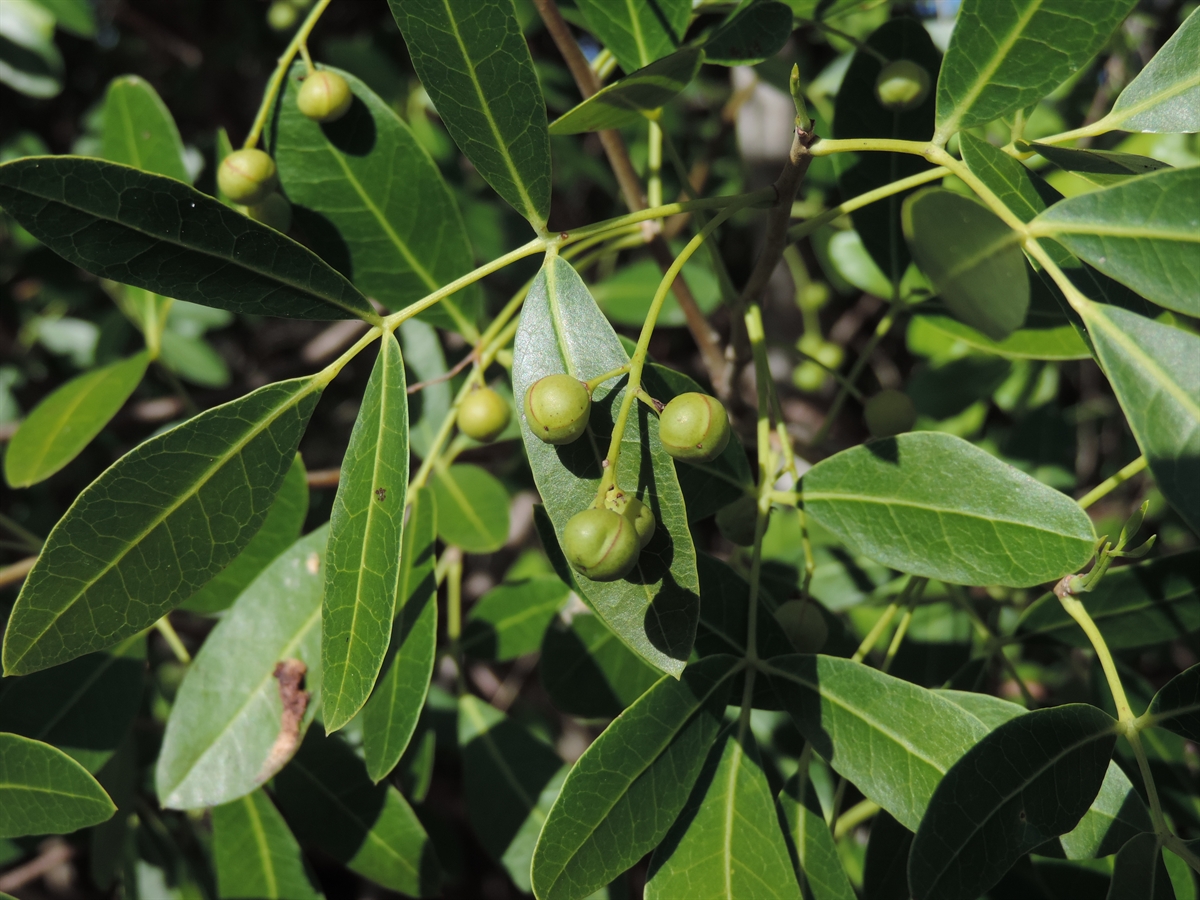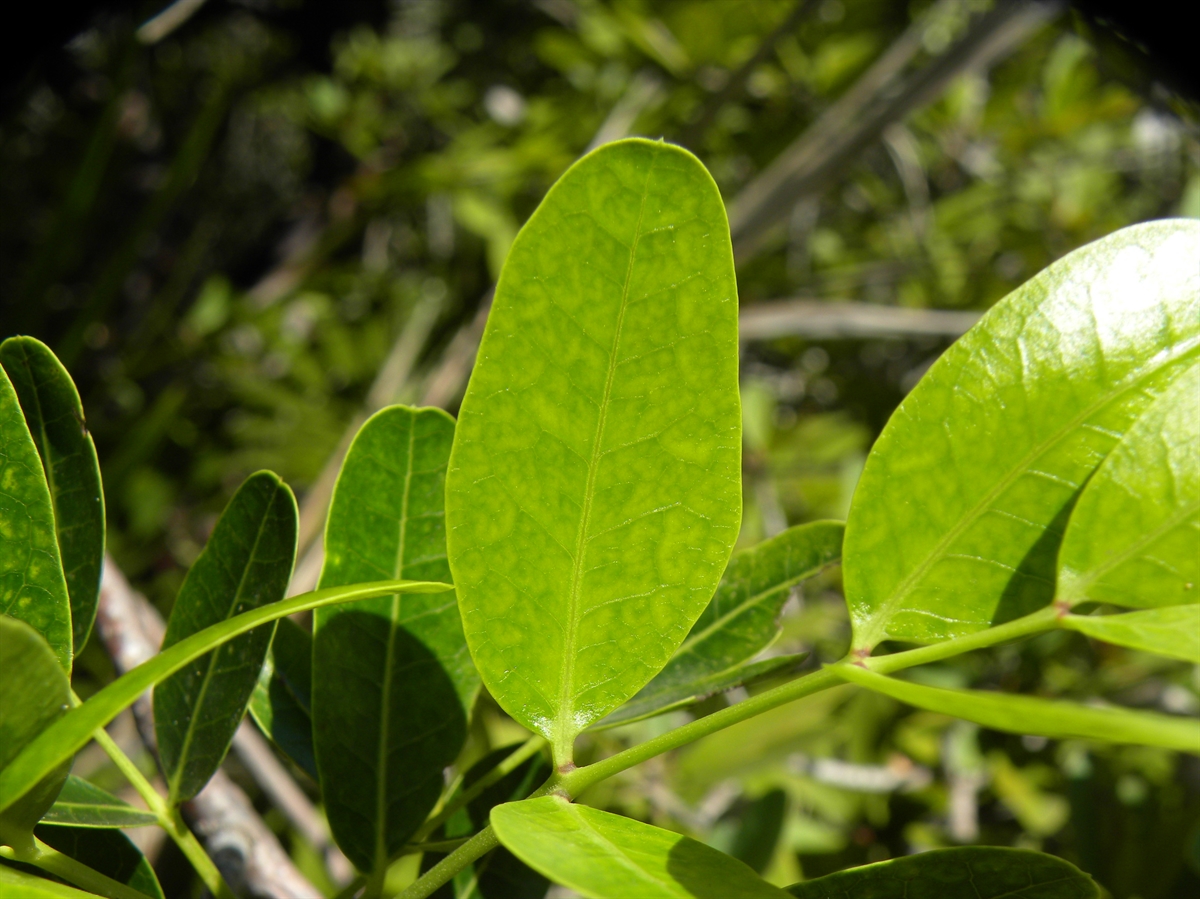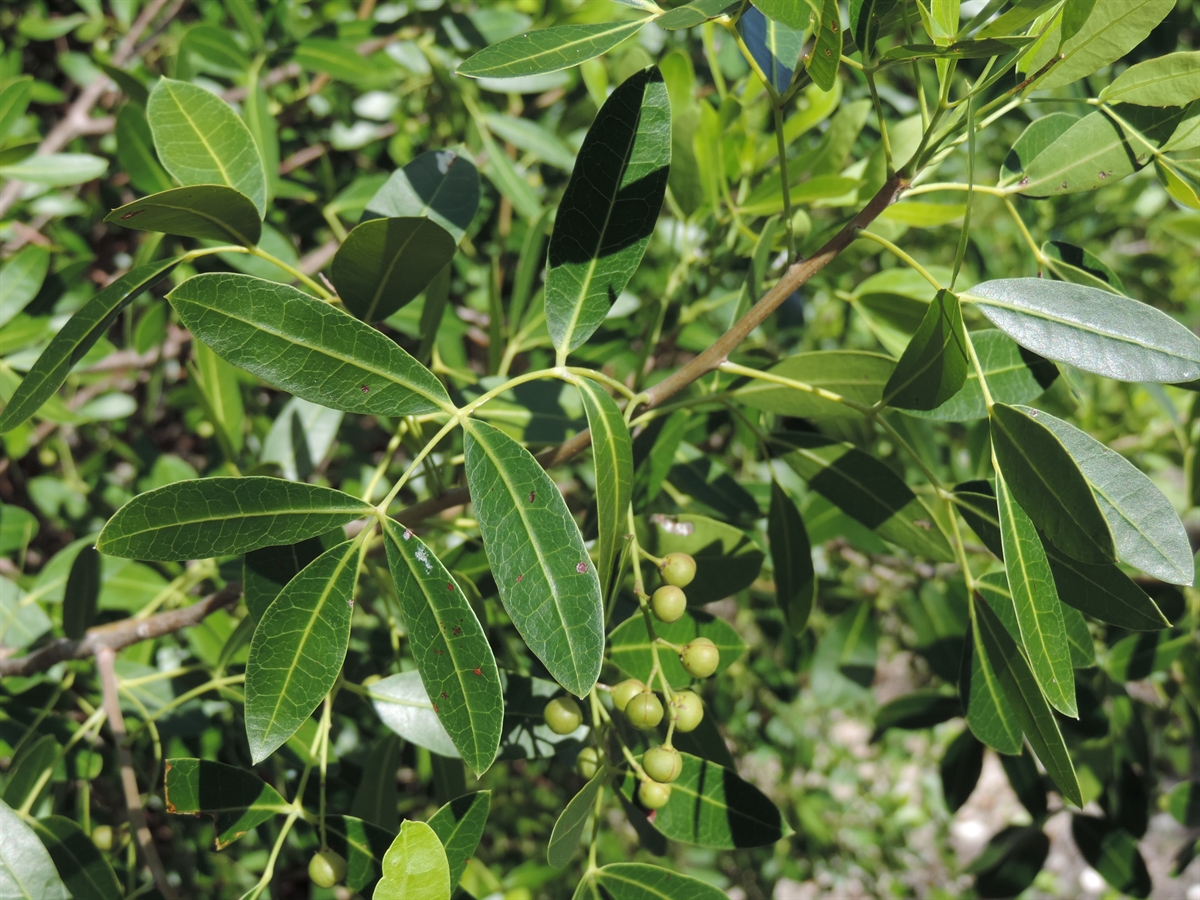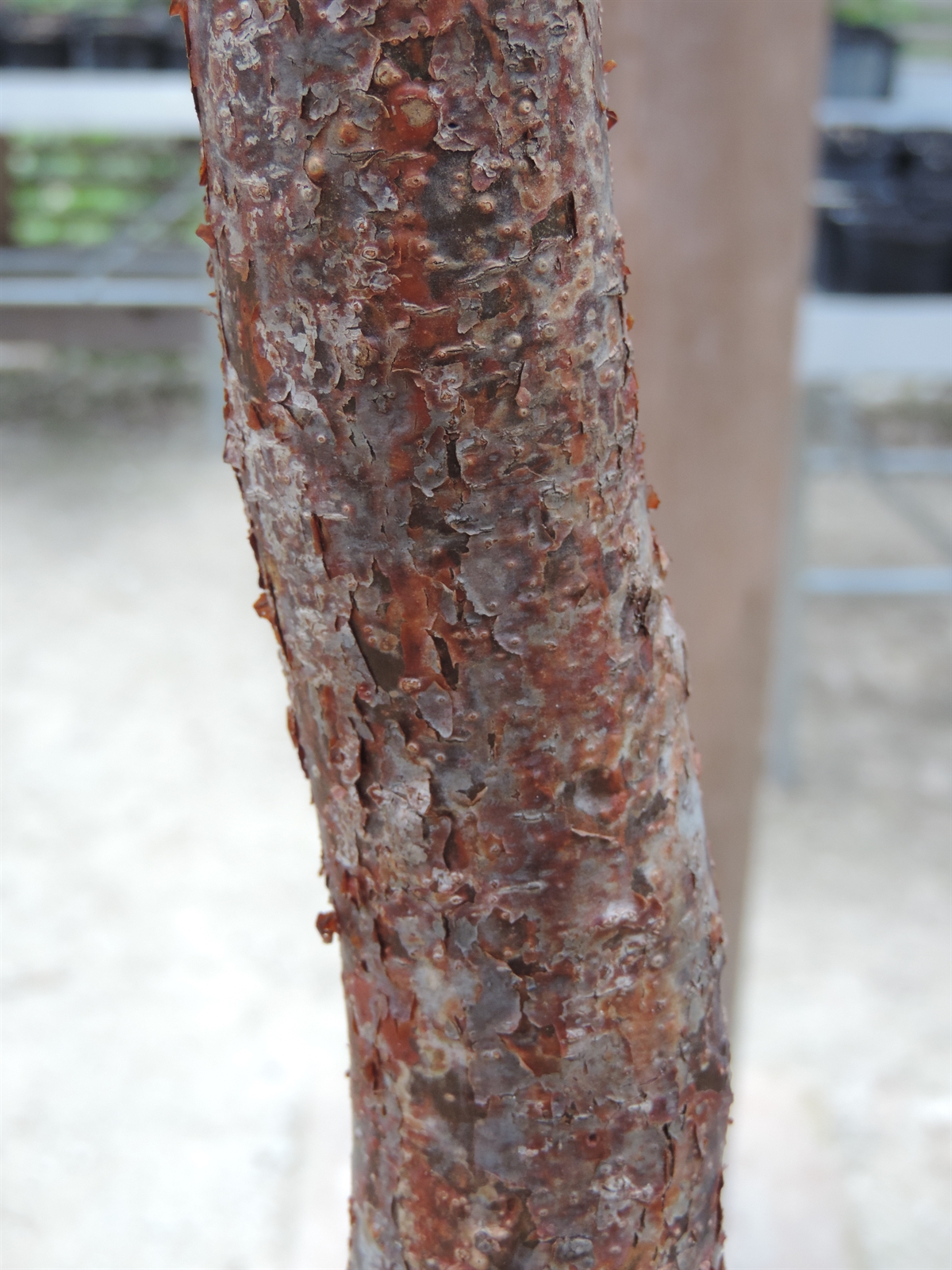Habit: Bursera frenningiae grows as a medium to large tree up to 13 m in height and a trunk to 50 cm. The bark is red and peels off in thin layers. The pinnately compound leaves are arranged alternately and are clustered at branch tips with 3-5 leaflets. The leaflets are lanceolate to oblong with a cuspidate leaf apex and entire leaf margin.
Bursera frenningiae is dioecious. The actinomorphic, incomplete, imperfect, flowers are arranged in panicles. Staminate flowers have 5 fused, green sepals, 5 yellow green unfused petals and up to 8 unfused stamens and an infertile superior ovary. Carpellate flowers have 3 partially fused sepals, 3 yellow green, unfused petals, 6 staminodes and a superior ovary with 3 locules. The fruit is a leathery berry at maturity.
Habitat: Bursera frenningiae grows in Dry Broadleaf Evergreen Formation – Shrublands (scrublands) on sand substrate in coastal areas.
Distribution: Bursera frenningiae is endemic to the Lucayuan Archipelago and is known to occur on Acklins, Long, Cat, Exumas, and Eleuthera.
Medicinal/Cultural/Economic usage: Bursera frenningiae is not used medicinally in the Bahamas.



